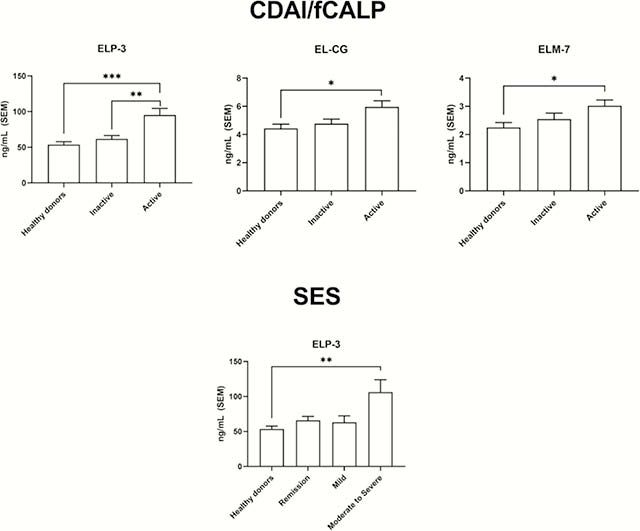P101 Biomarkers of elastin degradation are associated with clinical and biochemically active disease in Crohn’s disease
M. Pehrsson1, V. Domislović2, M.A. Karsdal1, M. Brinar2, A. Barisic3, Z. Krznaric2, T. Manon-Jensen1, J.H. Mortensen1
1Nordic Bioscience A/S, Biomarkers and Research, Herlev, Denmark, 2University Hospital Centre Zagreb, Department of Gastroenterology and Hepatology, Zagreb, Croatia, 3University Hospital Centre Zagreb, Department for Clinical Nutrition, Zagreb, Croatia
Background
In Crohn’s disease (CD), the extensive and potentially transmural inflammation results in increased activity of both matrix metalloproteases (MMPs) and serine proteases, causing a higher degree of intestinal tissue remodelling. This increased proteolytic activity could potentially cause degradation and loss of function of mechanical and functional matrix proteins, such as elastin. Therefore, we sought to investigate the association between biomarkers of elastin degradation and the disease activity in CD patients.
Methods
Seventy-two CD patients and 29 healthy donors (HD) were included in the study. Disease activity was determined according to the Crohn’s disease activity index score (CDAI >150) and/or a faecal calprotectin (fCALP >250). Additionally, CD patients were endoscopically assessed according to the simple endoscopic score (SES) for CD. Different protease derived biomarkers of elastin degradation: protease-3 (ELP-3), MMP-7 (ELM-7) and cathepsin-G (EL-CG) was measured in serum by ELISA. One-way ANOVA (Kruskal–Wallis) was applied for the statistical analysis.
Results
The levels of ELP-3 was significantly elevated in active CD when compared with the HD (

Conclusion
In this study, measurements of the elastin degradation markers were capable of differentiating between CD patients with either a clinically active or biochemically active disease, with the biomarker levels being significantly highest in the patients with an active disease. This was also the case when assessing endoscopic disease activity, where the protease-3-derived biomarker levels were highest in patients of moderate-to-severe disease activity. As such, the data provide indications of the beneficial use of these serum biomarkers as additional disease activity assessment tools for CD patients.


